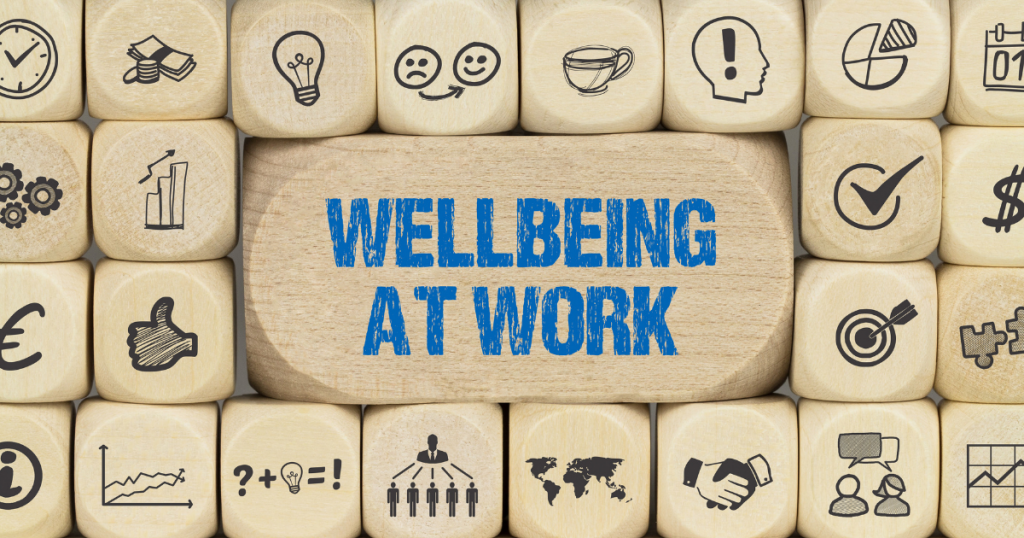Physical, Financial, and …
Even before COVID-19, employees were struggling to navigate our “always-on” work-life world. Lockdowns and worksite closings have only made it worse. If burnout, stress, and illnesses are taking a toll on your organization, supporting your employees’ total well-being can have a real impact on their productivity, engagement, and loyalty.
How organizations communicate their commitment to employee well-being is varied and unique — as it should be. If you’re trying to get your arms around the concept of total or holistic well-being, here are some questions you might want to consider.
What is “well-being”?
There’s not a generally agreed upon or scientific answer to this question. But here’s a simple definition you can start with: Well-being is a positive and meaningful perception that one’s life is going well. Easy enough!
What is a “holistic model for well-being” when it comes to employee benefits and the workplace?
At Smith, we think it means designing an overall employee experience that helps employees manage the wide range of issues and concerns they face and ultimately feel more protected, secure, and cared for. Sound unwieldy?
What are the components of holistic well-being?
Because there are so many issues and concerns that can affect one’s well-being, it can be helpful to categorize them. Following are a gathering of various components of well-being, their basic definitions, and examples of employee benefits and programs within each. In our experience, it is unusual for any single employer to use all of these various components. It’s more common for an organization to consolidate these various categories into a smaller, memorable set of three, four, or five.

| Component | Definition | Benefit Examples |
| Community | Connectedness to and participation in one’s community; good citizenship; availability of support and strong, functioning social networks | Corporate matching gifts Support for volunteerism Time off for voting Political action committees |
| Environmental | Good stewardship of natural resources; respect for surroundings; making connections between the physical environment and personal health | Recycling programs Healthy working environments Ergonomic work stations Waste reduction campaigns |
| Family | Having strong and positive marital, parental, sibling, intergenerational, and other familial ties | Paid parental leave Family and medical leave Adoption/surrogacy reimbursement Reproductive assistance benefits Pre-natal and parental coaching Employee assistance program Pet insurance Back-up care Dependent care flexible spending account |
| Financial | A sense of security that comes from feeling one has enough money to meet their personal and family needs | Retirement programs Health savings account Flexible spending accounts Life and AD&D insurance Disability insurance Business travel accident insurance Financial counseling/planning Paid leave benefits Voluntary insurance programs (critical illness, hospital indemnity, cancer) Identity theft protection/insurance Subsidized care options Prepaid legal plans |
| Intellectual | Cherishing mental growth and stimulation; having an open mind about new ideas; seeking ways to expand knowledge and skills; engaging in creative mental activities; exploring one’s own potential; sharing one’s abilities within the community | Training Mentoring Job rotation Temporary assignments Student loan benefit |
| Mental | Having thoughts, moods, and behaviors that allow a person to realize their own potential, cope with the normal stresses of life, work productively, and make a contribution to the community | Employee assistance program Counseling/therapy benefits Vacation, personal days, paid time off Flexible work arrangements |
| Occupational | Making use of one’s skills and talents to gain purpose, happiness, and enrichment; ability to achieve a healthy work-life balance, manage workplace stress, and build relationships with bosses and coworkers; integrating a commitment to one’s occupation into a satisfying and rewarding lifestyle | Training/development Mentoring Student loan benefit Service awards Rewards and recognition Career support/development Performance management |
| Physical | Ability to live a lifestyle that is not hindered by illness or injury; making behavior choices to ensure health and avoid preventable diseases and conditions | Medical Prescription drug Telehealth Dental Vision Fitness reimbursement Wellness programs |
| Social | Ability to form satisfying interpersonal relationships | Diversity and inclusion programs/policies Employee affinity groups Employee assistance program |
| Spiritual | Ability to experience meaning and purpose in life through a connection to one’s self or a power greater than oneself | Holidays Bereavement leave Flexible work arrangements |
What is a possible approach to communicating your organization’s approach to holistic well-being?
Consider which sounds more compelling to an employee:
“We support your total well-being.”
— or —
“We support your total well-being, including your physical, financial, and personal health.”
The second statement makes the nebulous concept of well-being a little more clear and tangible. Used consistently, alongside actual benefits and programs, each label can trigger employees to think of the comprehensive nature of your offerings and their long-term value.
Many organizations I’ve served use the labels above (e.g., financial) or one’s similar to them (e.g., money). Here are a few simple steps to finding the right terminology for your organization.
- List all your benefits programs, policies, and other offerings. Don’t overlook those ergonomic desks!
- Sort the list by grouping similar items. For example, put health care programs together. Try to create enough distinct, meaningful groups; eliminate empty categories, consolidate nearly empty ones.
- Come up with a brief description of each group.
- Give each group a generic name (for now).
- To find your final category names, refer to your organization’s brand identity and culture for inspiration. You don’t have to stick with the generic terms (like physical) and you probably want to avoid overly clever and vague terms (like vigor) but, ultimately, you want a clear and distinctive list that makes particular sense within your organization.
Let’s Connect
Are you struggling with articulating a clear and compelling approach to total well-being? Do you have a unique approach of your own? Please share your story with us. If you’d like some help, let’s discuss it over a kale smoothie.
